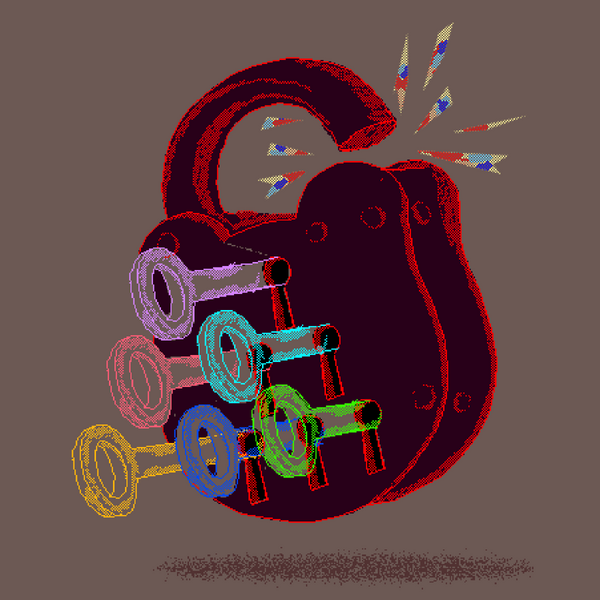Not long ago, a history of heroin addiction would have disqualified a figure like Robert F. Kennedy Jr. from being considered for a prominent government role such as secretary of Health and Human Services. Today, however, many authors, politicians, business leaders, and celebrities openly share their experiences with substance use disorders, with lived experience sometimes seen as an asset.
Despite this increased openness, recovery is still predominantly defined by lifelong abstinence—not only avoiding the drugs once abused but also generally steering clear of nonmedical drug use aside from substances like caffeine and nicotine. Most public accounts of recovery—such as Kennedy’s—highlight total abstinence often supported by 12-step programs like Alcoholics Anonymous.
In reality, many individuals who overcome addiction—including myself—do not completely abstain from all substance use indefinitely. For instance, while I am in recovery from heroin and cocaine addiction, I occasionally drink alcohol or use marijuana without adverse effects. Experts increasingly agree that recovery is achieved when substance use no longer disrupts a person’s ability to lead a fulfilling and productive life, regardless of abstinence.
However, few openly admit to non-abstinent recovery. Many fear that revealing occasional use of marijuana edibles or wine could lead others to believe they are still actively addicted, exposing them to continued stigma.
The lack of visibility for non-abstinent recovery stories distorts drug policies. It sustains the dominance of abstinence-only rehabilitation and recovery housing, which can discourage people from seeking help. This perspective also underpins the rejection of long-term use of medications like buprenorphine and methadone by many treatment programs, despite these being the only treatments proven to halve opioid overdose deaths, based on the mistaken belief that their use is incompatible with true sobriety.
Recent government proposals have heightened the urgency of recognizing non-abstinent recovery. Policies aiming to defund harm reduction initiatives—such as needle exchange programs and supervised consumption sites—that promote safer drug use without demanding abstinence, alongside pushing compulsory rehabilitation focused on total abstinence, threaten to limit recovery options.
To effectively address the overdose crisis, expanding recovery pathways is essential. There is no single correct approach. Research shows that non-abstinent recovery is more prevalent than commonly believed.
A recent federal survey including approximately 56,000 adults found that in 2024, 12 percent reported having faced problems with alcohol or drugs at some point. Nearly three-quarters of this group said they had overcome these issues. Many achieved recovery without abstaining completely, and over half did so without formal treatment. Earlier data from this survey series indicated that 65 percent of those identifying as in recovery reported recent alcohol or cannabis use, and did not view this as conflicting with their recovery. Other studies focusing on alcohol problems reveal that about half of those who recover do so by moderating their use rather than quitting entirely.
My personal recovery journey began with a lengthy period of abstinence starting August 4, 1988. The rehabilitation program I attended emphasized abstinence as essential, achievable only through lifelong participation in a 12-step program modeled on Alcoholics Anonymous. I embraced this fully, attending daily meetings until roughly 1995 and abstaining from recreational drugs except caffeine for seven years.
However, after facing deep depression triggered by the rejection of a book I had written—leaving me in despair and debt—I reconsidered psychiatric medications I had previously resisted. Many in 12-step circles criticize such medications as an 'easier path' that undermines the work of addressing personal flaws. Yet, feeling at risk of relapse, I sought additional help.
Starting Zoloft helped alleviate my persistent dread and social anxiety without resorting to self-destructive behaviors. Over time, I found less need for 12-step meetings. While I initially continued attending for social support, I grew increasingly uncomfortable with the program’s principles and gradually stopped going, though I remained abstinent until September 11, 2001.
Living in Manhattan during the terrorist attacks, I felt that day was one when having a drink was understandable. By then, I recognized that non-abstinent recovery was common, and I no longer believed moderate use of alcohol or marijuana would lead me back to addiction, especially since I had never struggled to control their use before. That night, I shared some wine with my brother without incident.
Today, I use alcohol and cannabis cautiously—enjoying wine with dinner or a marijuana gummy to aid sleep. Because these substances do not captivate me as heroin and cocaine did, moderation is manageable. If I consume more than about two and a half drinks, I feel compelled to stop, which never happened with my previous addictions.
Many in non-abstinent recovery similarly avoid their most addictive substances. Those who successfully moderate typically begin with extended abstinence to disrupt addictive habits. For example, a period of abstinence lasting months or years is among the '17 elements' recommended by the support group Harm Reduction, Abstinence, and Moderation Support (HAMS), which has over 12,000 members.
Another vital aspect of recovery is understanding the underlying reasons for excessive drug use and finding healthier alternatives. My drug use was driven by feelings of being unlovable. In recovery, I realized sensory and emotional overload hindered my social connections, and that antidepressants and cognitive techniques helped ease this discomfort. Now, social support, music, and exercise help me manage stress, enabling a meaningful life without relying on numbing substances.
Moderation strategies—such as alternating alcoholic with nonalcoholic beverages at social events, counting drinks, or using medications like naltrexone to reduce cravings—vary in effectiveness across individuals. However, without addressing the root causes of substance use, recovery is seldom sustainable. As psychologist Edward Wilson explains, the key question is, 'What are you using it for?' and then, 'What can serve as a more satisfying replacement?'
Not everyone can safely moderate their substance use, and shifting abruptly from abstinence-only to harm reduction-focused treatment would be unwise. Yet, since many who recover do not pursue total abstinence—or experience multiple relapses before achieving it—it is critical that addiction programs recognize this reality and provide a full spectrum of options. Research indicates that attempts at moderation often lead to eventual abstinence, as setbacks help individuals realize when quitting is necessary.
Nearly 40 years into my recovery, we have gained significant insights into effective ways to support healing. It would be a setback to ignore this knowledge now, especially as overdose deaths begin to decline.


0 Comments
No comments yet. Be the first to comment!